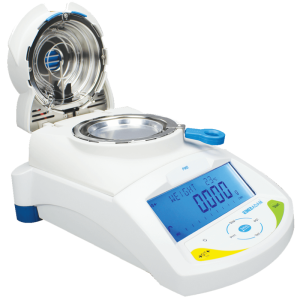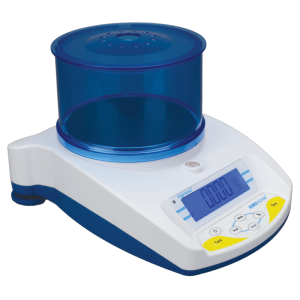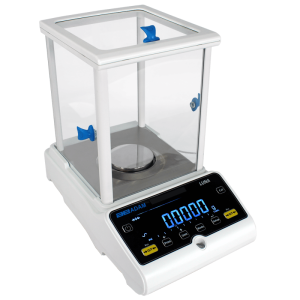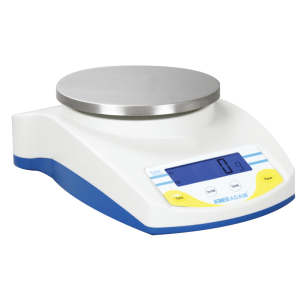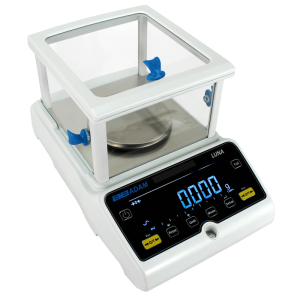Laboratory Balances
Different Kinds and Purposes of Laboratory Scales
Weighing devices that are used in scientific laboratories, medical universities and schools are called laboratory scales. These measuring tools are designed for the fields of researchas well as development. Physical components and chemical substances can be measured through the use of laboratory weighing scales. These are very useful in accurately and precisely measuring the weight or the mass of items, objects, liquids, and chemicals. Generally, these weight measuring devices include a beam that has a pointer attached to it, a measuring arm that displays weight in fractions, as well as a pivot. These are the three main parts of laboratory scales that enables them provide precise weight measurements.
The Two Basic Types of Laboratory Scales
Laboratory scales can be classified into two most basic types; top loaders and analytical balances. Top loaders work by weighing items and objects through the use of the panssituated on the top of the machine. This type of laboratory weighing instrument provides weight readouts than can range from grams to kilograms with the accuracy and precision of 0.1 mg to 1 mg. This kind of laboratory measurement device is convenient and easy to use but is more prone to mistakes since they do not have the right tool for securing the objects unlike the analytical balances.
Analytical balances, on the other hand, include enclosed weight pans that are further divided into two more kinds; the semi micro balances and the micro balances. Semi micro balances provide accuracy of up to 10 micrograms, while micro balances are more accurate with its readouts of up to 1 micro gram precision. There are many other types of laboratory weighing scales that are being sold in the market, but these are the two types that most laboratory workers will immediately be able to recognize.
Other Types of Laboratory Balances
Aside from the analytical scales and top loading balances which are the two most commonly used and most popular laboratory scales, there are many other kinds of these measuring devices that are used in science laboratories, schools and medical facilities. These include unequal-arm balances, equal-arm scales, platform balances, moisture balances, spring balances and beam balances. The equal arm scale is the simplest kind of laboratory beam balance. It works through a beam or a uniform bar which is suspended in the exact center area of the scale. The unequal arm balance, on the other hand, works the opposite way, wherein the bar is situated almost at one of the ends.
Platform scales are classified under equal arm balances wherein these measuring devices make use of two platforms. One platform is attached to one end of the beam’s top side, and the other goes to the other end of the beam’s top side. Moisture balances or scales are designed to measure the amount of moisture contained in a sample material. Spring scales are maid of coiled springs that are fixed to a support which is in turn attached to one end of the scale. The other end of the coiled spring is a hook to where the item or the object is then applied for weighing purposes.
Features of Laboratory Scales
Laboratory scales are continuously being developed and improved for people to find easier ways in weighing items or objects without even a margin of error. Today’s laboratory balances have been designed to provide much more accurate and precise readings than the older scales were able to provide. These newer models of weighing scales for laboratory use also include many other features that laboratory workers find very useful and extremely helpful for their work. These functions include statistical study, part counting and density computation among other types of required computations.
Other add on features are also included in the more expensive models of laboratory scales. These weighing equipment are available in a wide variety of options. Some scales provide different choices for color screens. Other scales include touch screens. There are laboratory weighing devices that have faster microprocessors that provide more precise and more accurate data readings. Those that make use of high technology materials often include hands-free operation. Other features are multiple interface selections that allow connectivitysuch as universal serial bus controllers (USB), wireless features, series and parallel connectivity.
The different interface options can also include easy connectivity to printers for users to readily print out and have a hard copy of their weight readings. Regulatory compliances are an essential part of these laboratory scales since these are integral to the field of medicine and pharmaceutical purposes. The Ingress Protection (IP) as well as the National Electronic Manufacturers Association (NEMA) are the two organizations responsible for the evaluation of these weighing equipment. These measurement devices also need to be certified by the National Type Evaluation Program (NTEP).
Specifications of Laboratory Balances
Laboratory scales have their own set of required specifications in order for these instruments to function to its fullest. These specifications include certifications, capacity, display, interface, platform width, platform length, ratings as well as capacity. Similar to any other type of scales, laboratory balances are also available in both analog laboratory scales and those that have digital readout displays. Analog laboratory balances feature an analog display making use of a pointer or a needle. Digital laboratory balances may either make use of liquid crystal displays, also known as LCD or the light emitting diode, more commonly known as LED. Others may also make use of vacuum fluorescent displays (VFD).











